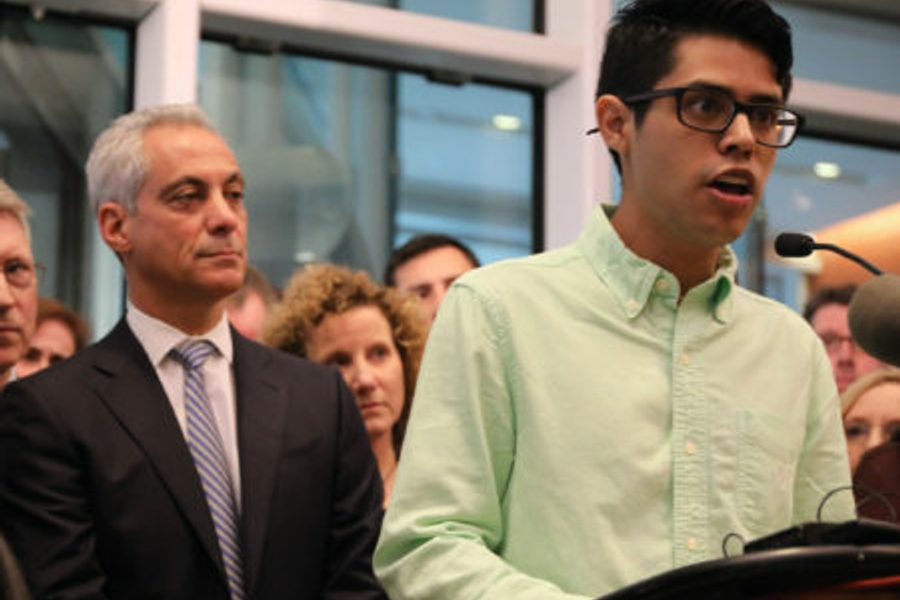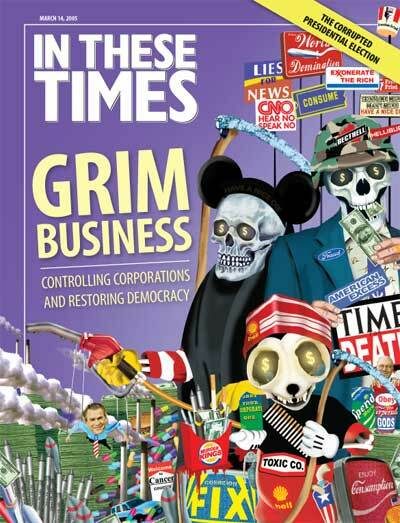
I just turned 49, which is quite dramatic if you consider that I am a much touted “radical” performance artist, meaning someone who is known for his transgressive aesthetics, political bravado and uncompromising irreverence. Suddenly, I am growing white hair and a belly, and my voice is reasonable and tempered. A cruel curator friend of mine says that I am no longer feared or desired but “respected.”
Young artists are beginning to call me “Professor Gómez” or even worse, “maestro.” It flips me out.
I have spent a lifetime utilizing my body and my tongue as tools to express my opposition to mainstream culture, to advocate anti-authoritarian artistic practices, to promote alternative communities and support radical sexualities. And I always thought of myself as ageless. Or rather, as permanently young. To remain young for me implied a relentless capability to reinvent myself, to constantly take risks, and to remain in touch with the cultural and political pulse of the times and the streets. It also meant not to think too much about the past or the future, to always operate in the “here” and the “now.” My existential motto was “If I don’t go mad at least once a week, I will lose my mind,” and I was loyal to it.
But one day I turned 40, and my rebel contemporaries and partners in crime began to settle down. They married. They bought homes. They got full-time jobs. They suddenly had much less time to hang out in seedy bars and undertake wild art projects. I saw them, one by one, losing their spunk and bravado, becoming cautious and moderate, talking about saving for the future (anathema for a radical artist), and dyeing their hair to hide the grey. It made me sad. I hung out more and more with younger artists who were willing to jump into the abyss with me. I even perceived a generational fault line between people of my generation and me.
As I continued to tour, perform, write, question power and engage in critical culture, my contemporaries advised me: “Gómez-Peña, you should get a job in academia. It gives you medical insurance.” I got depressed.
I experienced my mid-life crisis by going out with someone 17 years younger than me, a Mexico City upper-class princess. Our extreme differences in “lifestyle,” politics and taste in art made me even more conscious of my age. One day, I realized I was definitely going through my climaterio when I found myself disco dancing in a Mexico City nightclub surrounded by 20-year-old hipsters. Patético. I excused myself, pretended to go to the restroom and escaped through the back door … for good.
The symptoms of aging were cruel. When I was younger I had visions, utopian visions; after 40, I had dreams. As a young artist, the streets were my laboratory of experimentation; as a “mature” artist, conversations and rehearsals replaced the streets. I used to always collaborate; suddenly I was thinking more and more of my solo work and of my “personal voice.” (Was I more selfish or merely wiser?) I became increasingly more conscious of my “artistic legacy,” another anathema for a performance artist. But worse than anything, I became “tolerant” of political difference … and very sentimental. I stopped having formidable intellectual fights with conservative critics. I started to cry at Mexican boleros. I even stopped getting naked on stage. (Clearly, I did this to protect my audience from my growing love handles.)
I also became aware of the fragility of my body. After a lifetime of abusing my body — partying and simply working very hard — one day I got gravely sick. I came face to face with Death. For eight months I faced the prospect of a life without touring, without performing; a life as a stationary intellectual forever meeting my inner -demons in front of my laptop. I was inconsolable. During my slow recovery I wrote my first script that dealt with my past — a biographical reflection on what it meant to be a rebel Latino artist facing the abyss of the 21st century and the dark clouds of middle age. I noticed that my poetic tone had changed. I was more … somber and self-critical; less outrageous. I was thinking about my place in the world, my relationship to family, friends, art, community and the universe at large. I had lost some of my sense of humor. That script was better literature, but denser and more enigmatic.
I eventually recuperated and went back on the road, thinking it all had been a temporary nightmare. But I was wrong, pinche wrong.
When I turned 45 my memory began to betray me. I suddenly started forgetting names, conversations, incidents, book and film titles. My recent memory, say, of the past three to seven years, was even worse. I first attributed it to Caribbean rum and tobacco, but then I started talking to other artists my age, and they were going through an identical experience. An Indian artist friend told me: “Don’t worry ese, it’s the Big Smoke. You are simply going through the Biiigg Smoke.” My wise mother told me: “It’s the German guy inside of you — Mr. Alzheimer. You have to start making peace with him.” It wasn’t funny. I began to consciously engage in memory exercises, in acceptance exercises. I became a Chicano Buddhist.
Now that I am approaching 50, I truly wonder if as an artist one can remain current, “hip” and connected to the world at this age, or if soon I should withdraw with dignity from the world, become a neighborhood drunk or commit ritual suicide as my last performance art piece. But when these thoughts begin to linger over my inner stage, my sense of humor and my love for life somehow redeem me once again. I think to myself: “Perhaps I can hang my weapons on the wall and still be a warrior,” like my Colombian brujo told me … or “perhaps I can become a hip elder loco artist like Duchamp or Burroughs … or better yet, a sexy old rockero like Bowie or Jagger.”
For the moment my only hope is to continue walking, not running, with a bit of style; to remain open-minded and tolerant; to consciously continue taking risks and opposing authority whenever I smell it; and to exorcise the future … as much as I can. My only blessing is that Carolina, my wife, also 49, is still gorgeous, hilarious and as much a lunatic as she was when I met her eight years ago in New York City.







